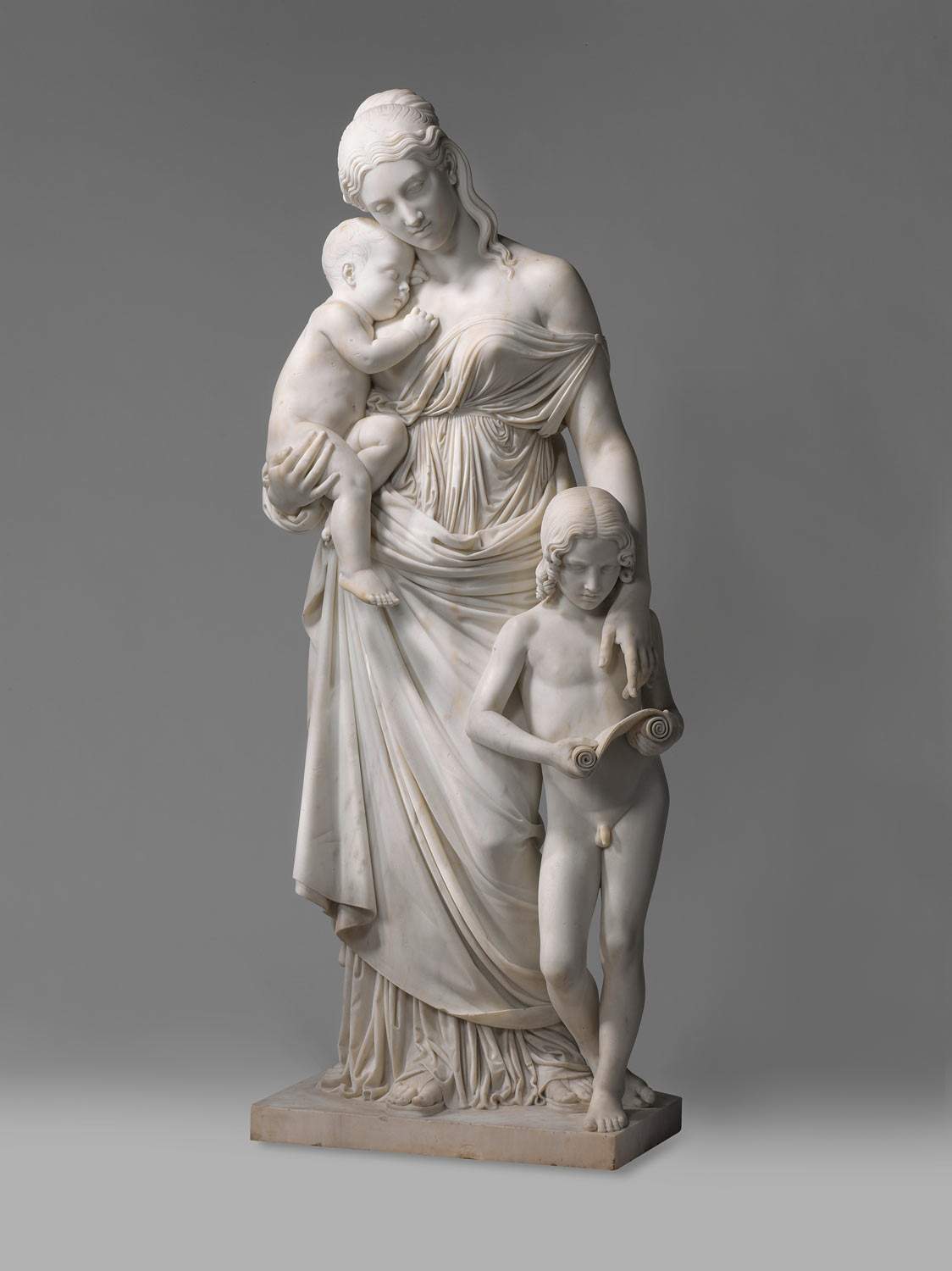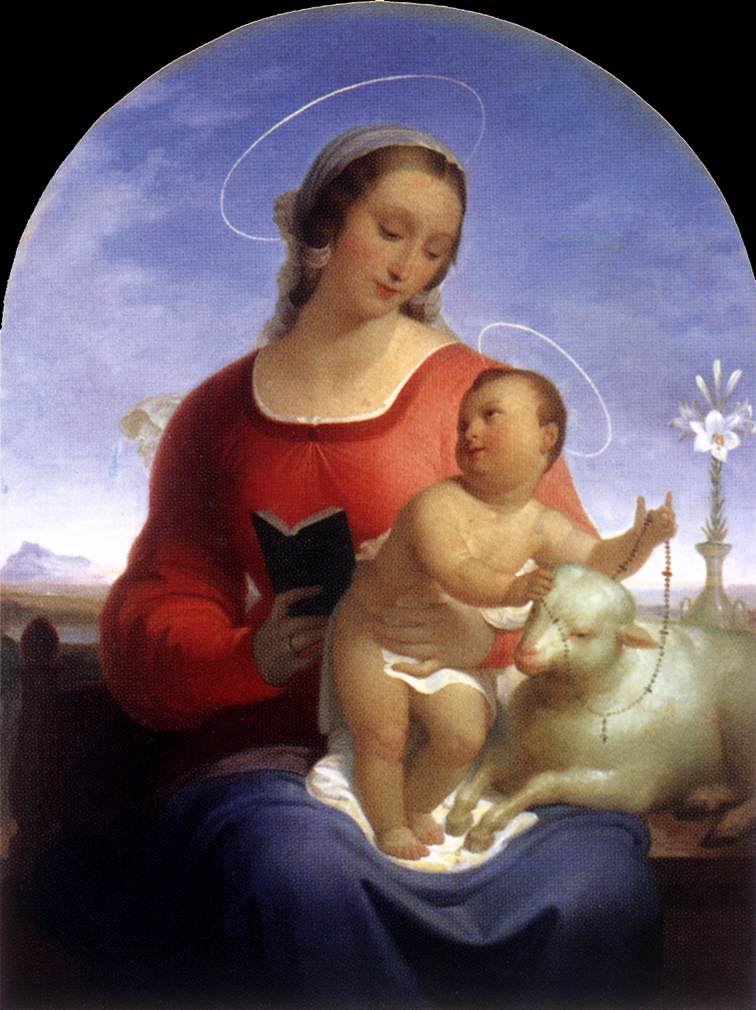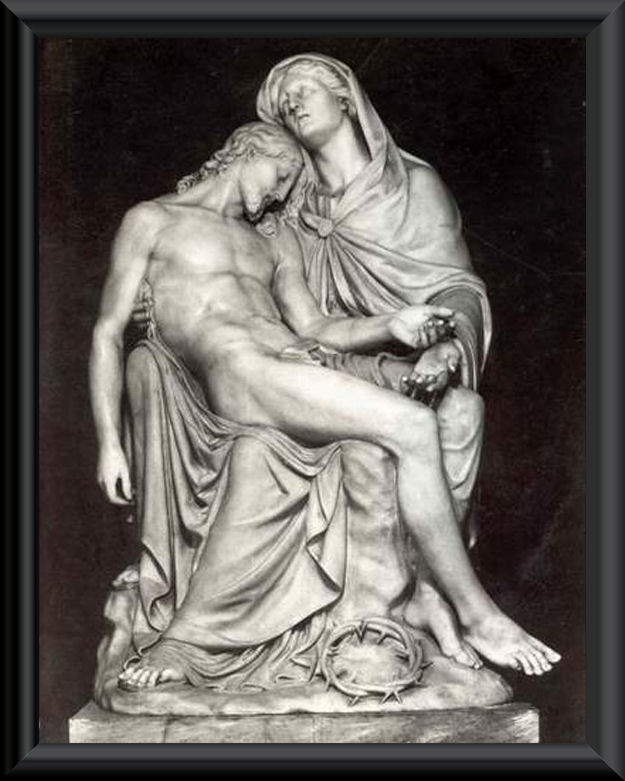Toward the end of the1910s, signs of a reaction to neoclassicism began to appear, especially against the principle of ideal beauty brought forward by neoclassical theorists and artists. Indeed, the neoclassicists aspired to ideal beauty by attempting to strip it of all that was imperfect in nature: this way of thinking was challenged by some artists who adhered to the new poetics of purism, who contrasted the concept of ideal beauty with that of natural beauty.
The purists (a name by which the adherents of this movement identified their desire for a return to the purity of the early Renaissance, that is, everything that had been produced before the Roman Raphael ) based their art no longer on the imitation ofclassical art, but on the imitation of nature.
The first important exponent of this new vision was Lorenzo Bartolini (Savignano di Prato, 1777 - Florence, 1850), the first great sculptor of natural beauty. After he had been a pupil of the neoclassical painter Jacques-Louis David in Paris, Bartolini returned to Italy and began, between the 1910s and the 1920s, to produce sculptures that no longer looked to ancient art but found their main points of reference in the sculptors of the early Renaissance, above all Donatello and Verrocchio, but did not disdain even early Raphael. In fact, one of Bartolini’s most famous works, the Educating Charity (1817-34, Florence, Palatine Gallery of the Pitti Palace), openly demonstrates the influences of Raphael’s Madonna del Granduca. Why did the purists reject the mature Raphael? Because they saw, in the mature production of the Urbino artist, the first wills to search for the ideal beauty, which was instead a concept unknown to the artists of the early Renaissance, since their primary desire was to imitate nature, and it was therefore a production that moved away from the quests of neoclassicism (which instead sought the ideal beauty), which the purists wanted to oppose.
This reference to Renaissance models can also be seen very explicitly in Lorenzo Bartolini’s funerary monuments, which were totally different from those of neoclassical artists (such as those of Canova himself), far from modern schemes, and which instead drew on the traditional arcosolium funeral monument widely practiced during the Renaissance (Funeral Monument of Countess Sofia Zamoyska, 1837-1844, Florence, Santa Croce). A key work for understanding Lorenzo Bartolini’s poetics is the Stele of the Hunchback (c. 1843; Florence, Galleria d’Arte Moderna, Palazzo Pitti): a stele surmounted by a tondo in which there is a relief of a hunchback holding a mirror in one hand and killing a snake with the other hand. This is the most important artistic manifesto of Purism: according to Bartolini, artistic dignity can be manifested even in subjects that are far removed from the concept of ideal beauty (the hunchback precisely, whose presence in art is justified by the fact that, while not beautiful to look at, it is nonetheless part of nature), for a poetics that is more adherent to truth, represented by the mirror, and contrary to the envy of those who criticize it (symbolized by the snake). Concepts, these, that are summed up in the phrase found on the stele itself: all nature is beautiful relative to the subject to be treated.



Purist instances found their theoretical formulation in the writing entitled Del purismo nelle arti (On Purism in the Arts), drafted by the painter Antonio Bianchini (Rome, 1803 - 1884) and signed in 1842 by three of the greatest purist artists: the German Friedrich Overbeck (Lubeck, 1789 Rome, 1869), and the Italians Pietro Tenerani (Carrara, 1789 - Rome, 1869) and Tommaso Minardi (Faenza, 1787 Rome, 1871). This writing thus stands as the manifesto of purism.
Pietro Tenerani began his artistic career under the sign of neoclassicism: in fact, he was a pupil of Bertel Thorvaldsen, and in his early youthful productions he demonstrates the same desire for abstraction as the Danish sculptor even though the artist from Carrara did not lack the sensuality, in female nudes, that he had appreciated in the work of Canova(Amore removes a thorn from the foot of Venus, 1818-1822, St. Petersburg, Hermitage). However, beginning in the 1830s, Tenerani began to show the first signs of what would later be his purist turn in his art, so much so that it led him to become one of the signatories of Antonio Bianchini’s writing. Tenerani, like Bartolini, also turned to early Renaissance sculptors such as Verrocchio, but Tenerani also demonstrated a meditation on Nanni di Banco ’s sculptures made for the church of Orsanmichele in Florence, which were the basis for some of his religious sculptures (e.g., St. John the Evangelist, c. 1836, Naples, San Francesco di Paola). The sculptor shared the art scene in 19th-century Rome with his fellow citizen Carlo Finelli: a bitter and heated rivalry arose between the two, partly because of their two opposing ways of understanding art (neoclassical Finelli, purist Tenerani).
Tommaso Minardi, on the other hand, was the most important exponent of purism in painting: his work, with its very refined and elegant tones, found its main points of reference in the Florentine Raphael but especially in the art of Perugino, whose lyricism he was able to take up(Madonna of the Rosary, 1841, Rome, National Gallery of Modern Art).
Another interesting personality of Purist art was Benedetto Cacciatori (Carrara, 1794 - 1871), one of the most prolific and in-demand artists of his time (he was official sculptor to the Savoy family for whom he executed numerous works). The artist started, like Tenerani, from neoclassical art, and then flowed into a purism that looked yes to the great masterpieces of Renaissance art (exemplary in this sense is his Pieta (1830) preserved in theAbbey of Hautecombe, the burial place of many members of the Savoy family), but he also tdemonstrated that he never yielded to overly “showy” representations of the characters’ feelings and passions, a legacy, this, of his training in the neoclassical sphere. By comparison in a work with a subject almost similar to that of the Pieta, namely Pietro Tenerani’s Deposition, one can instead read on the faces of the protagonists all their states of mind.




 |
| Purism, origins, development and style of the 19th century movement |
Warning: the translation into English of the original Italian article was created using automatic tools. We undertake to review all articles, but we do not guarantee the total absence of inaccuracies in the translation due to the program. You can find the original by clicking on the ITA button. If you find any mistake,please contact us.